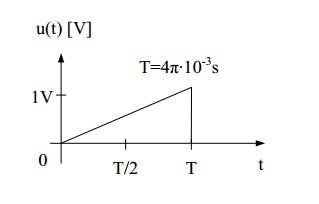This question is likely asking you to recall Parseval's identity, which is stated as
$$\sum_{n=-\infty}^\infty |c_n|^2 = \dfrac{1}{2\pi}\int_{-\pi}^\pi |f(x)|^2 \, dx$$
where \$c_n\$ are the coefficients of the Fourier series of a periodic function \$f(x)\$ with period \$2\pi\$.
You can see that the right-hand side of the identity is proportional to the average power of the signal. So, with some manipulation of the scaling factors, you can use this to assign a portion of the power of the single to each of the fourier components.
Note 1: I assume that your signal repeats on every interval of time T (that is, \$f(t+T)=f(t)\$). The way you've drawn it,it looks like the signal is 0 outside the region \$0 < t < T\$, but that would make it a non-periodic signal and it wouldn't make sense to talk about its Fourier series representation or average power.
Note 2: Notice that in your formula for the average power, you are have two different variables named T. One which you take to the limit of infinity, and one built in to the definition of the function f. Since f is periodic with period T, you don't need to take a limit and you can just use
$$ P = \dfrac{1}{T}\int_\tau^{\tau+T} f^2(t)\, dt$$
for any \$\tau\$ of your choice.

